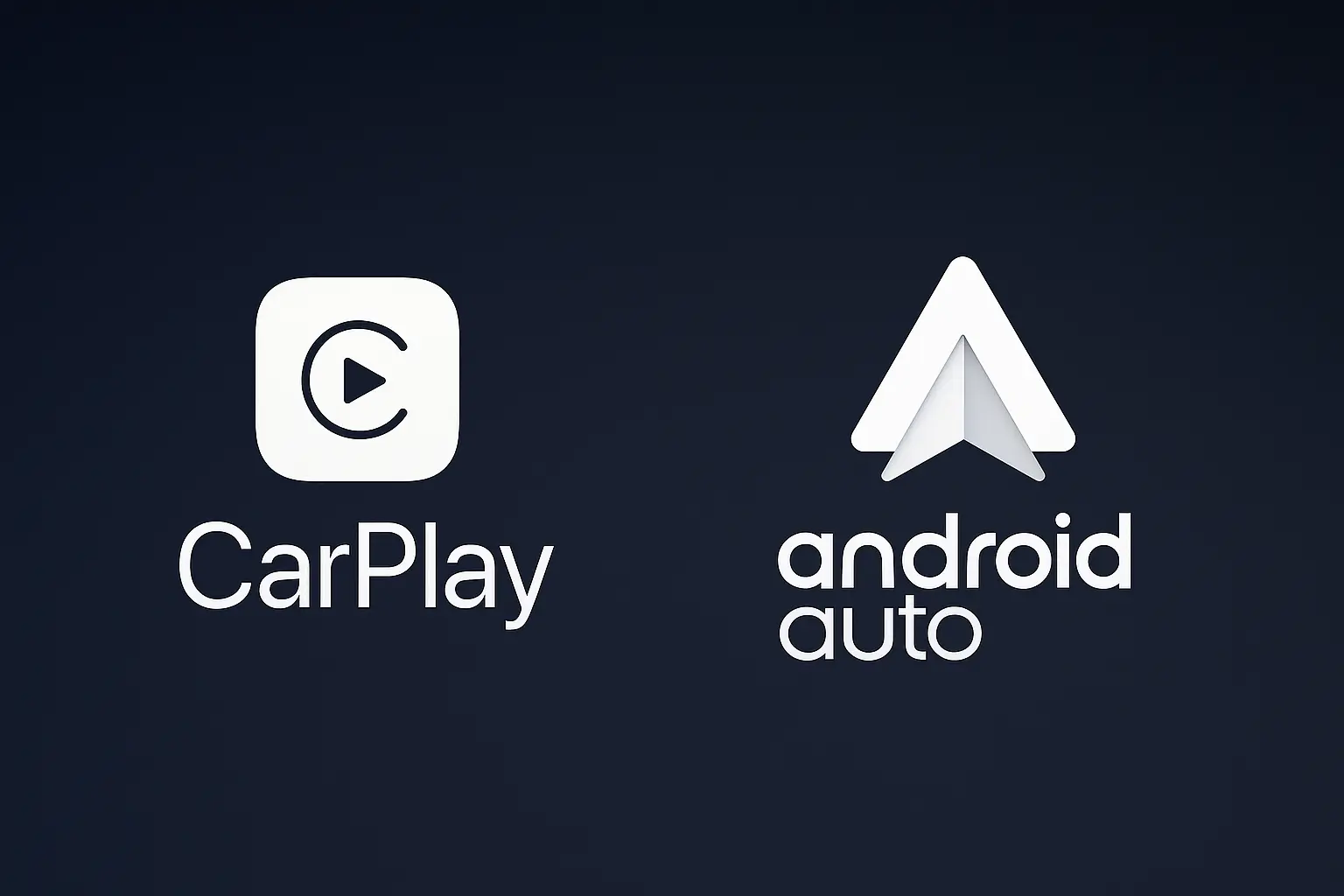Over the past decade, Apple CarPlay and Android Auto have become essential technologies for modern cars, replacing clunky infotainment systems with sleek smartphone-powered interfaces. By 2025, both platforms have matured significantly, offering smoother performance, smarter AI integration, and deeper connectivity with vehicles. Yet, the debate remains: which is truly better for drivers in 2025—CarPlay or Android Auto?
When Apple CarPlay first launched in 2014, it was praised for its simplicity and clean design, mirroring the iOS experience drivers were already familiar with. Today, in 2025, CarPlay has evolved into a powerful hub for communication, navigation, and entertainment, enhanced by Apple’s ecosystem. With the announcement of next-generation CarPlay, Apple introduced full dashboard integration, meaning CarPlay can now control not just media and navigation, but also climate control, fuel levels, and even EV battery stats. According to The Verge, this expansion transforms CarPlay from a simple projection system into a true operating system for the car.
Android Auto, meanwhile, has also undergone a dramatic evolution. Originally launched in 2015, it now benefits from Google’s expertise in maps, AI, and connectivity. By 2025, Google Assistant integration makes Android Auto highly conversational, enabling drivers to control virtually every aspect of the system using natural voice commands. Android Auto also integrates deeply with Google Maps and Waze, giving it a clear advantage in real-time navigation and traffic prediction. As Android Authority points out, Android Auto continues to lead in flexibility and customization, appealing to users who value choice over strict design.
One of the key differences in 2025 lies in AI and personalization. Apple CarPlay leverages Siri intelligence and iCloud, remembering frequent routes, music preferences, and even suggesting stops along the way. Android Auto goes a step further by tapping into Google’s AI ecosystem, predicting destinations based on calendar events, reading messages aloud, and providing proactive alerts about nearby services like EV chargers or restaurants. For drivers who rely on contextual assistance, Android Auto may feel more adaptive, while CarPlay feels more streamlined and privacy-focused.
In terms of entertainment, both platforms now support major music and podcast apps such as Spotify, Apple Music, Audible, and YouTube Music. However, Apple CarPlay users get exclusive perks like seamless integration with Apple Music and Podcasts, while Android Auto offers broader compatibility, including apps not available on iOS. Video playback (while parked) is also supported on both platforms, though Google has been quicker to expand options like YouTube integration.
Navigation remains a battleground. Apple Maps within CarPlay has significantly improved over the years, offering detailed 3D city views and real-time lane guidance. Yet, Android Auto’s Google Maps and optional Waze integrationstill hold the edge in global accuracy and predictive routing. Many reviewers, including TechRadar, note that Android Auto remains the navigation king, especially for frequent travelers.
When it comes to EV integration, both platforms are adapting to the electric future. Apple CarPlay can now display EV charging status, range, and battery health, while Android Auto integrates directly with apps like ChargePoint and PlugShare, offering more granular control and real-time charging station data. For EV owners, Android Auto often provides richer functionality, but CarPlay benefits from tighter UI integration.
The design philosophy of both systems also remains distinct. CarPlay emphasizes minimalism and safety, with large icons, limited distractions, and a uniform aesthetic across all vehicles. Android Auto, on the other hand, offers more customization, allowing automakers and users to tweak layouts and functions. For drivers who prefer consistency, CarPlay shines; for those who like flexibility, Android Auto delivers.
Of course, compatibility still matters. CarPlay works best with iPhones, and Android Auto requires Android smartphones. While wireless connections are now the norm for both, setup and stability can vary by vehicle. Automakers increasingly support both, but Apple’s tight ecosystem ensures smoother integration, while Android Auto supports a wider variety of hardware and accessories.
CarPlay vs Android Auto in 2025 – Comparison Table
| Feature | Apple CarPlay 2025 | Android Auto 2025 |
|---|---|---|
| AI & Assistant | Siri, iCloud integration | Google Assistant, predictive AI |
| Navigation | Apple Maps (3D, lane guidance) | Google Maps + Waze, real-time traffic |
| Entertainment | Apple Music, Podcasts | Spotify, YouTube Music, YouTube (parked) |
| EV Support | EV battery & range in CarPlay UI | Integration with ChargePoint, PlugShare |
| Customization | Minimal, uniform UI | Highly customizable layouts |
| Integration | Works seamlessly with iPhone, Apple ecosystem | Works across Android phones, broader app support |
| Price | Free (with iPhone) | Free (with Android device) |
| Best For | Simplicity, privacy, premium UI | Flexibility, navigation, EV features |
Final Verdict
By 2025, both Apple CarPlay and Android Auto are highly polished platforms that deliver safe, smart, and enjoyable driving experiences. CarPlay wins on design, simplicity, and Apple ecosystem integration, making it ideal for iPhone users who value seamlessness. Android Auto wins on navigation, flexibility, and EV support, making it the better choice for Android users and those who prioritize customization and real-time assistance.
In truth, the “winner” depends on the driver. For iPhone owners, CarPlay is unbeatable. For Android users, Android Auto remains the clear champion. The good news? In 2025, most modern vehicles support both, leaving drivers free to choose the system that fits their lifestyle best.
👉 For more app comparisons and mobility insights, visit our Technology section.
👉 To read more side-by-side reviews, check our Reviews.
